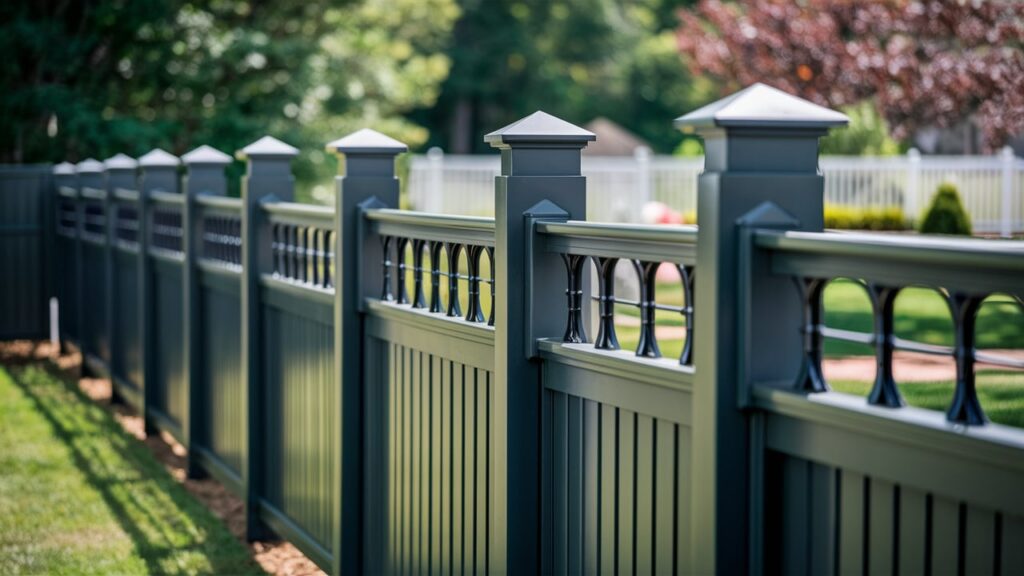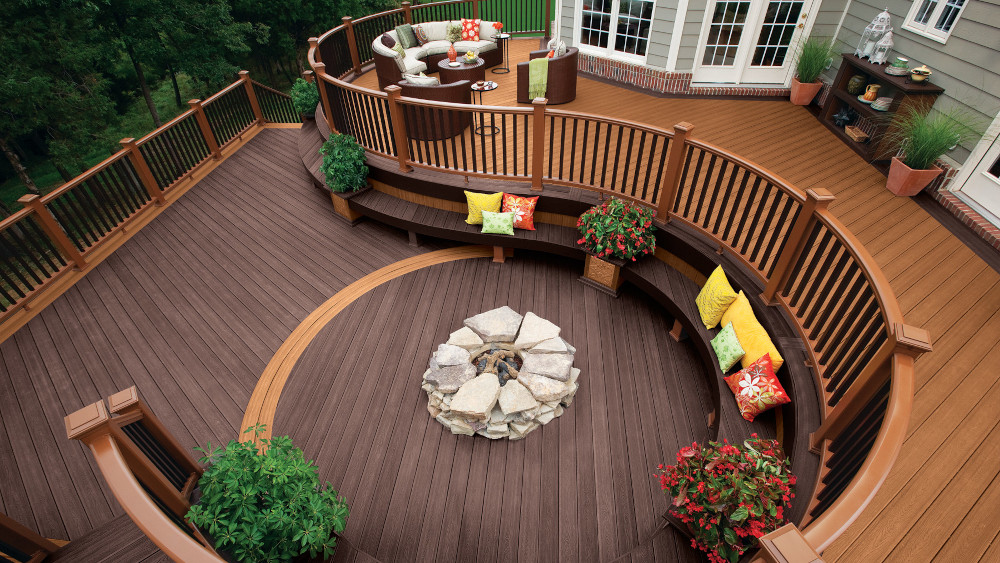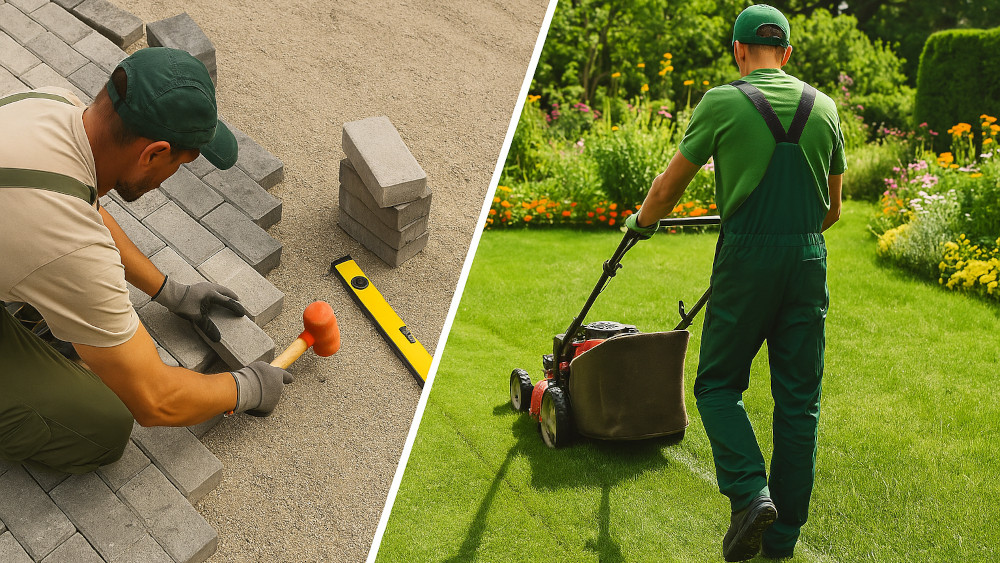When you’re choosing the right fence for your property in New Zealand, you’ll need to balance functionality, aesthetics, and budget. Understanding your needs is vital; whether you require privacy, security, or simply a decorative boundary, each purpose demands specific considerations. Material choices like wood, metal, and vinyl each come with their own sets of advantages and maintenance requirements. But how do local regulations and climate conditions play into your decision, and what impact might your choice have on property resale value? There’s more to explore to make an informed decision.
Main Points
- Identify the primary function of the fence: privacy, security, or aesthetics.
- Check local fencing regulations for height, boundary, and approval requirements.
- Consider climate conditions and choose materials like vinyl, composite, or treated wood for durability.
- Balance your budget with maintenance needs and long-term resilience.
- Evaluate the resale value and visual harmony with your property and neighborhood.
Understanding Your Needs
First, identify the primary function of your fence—are you prioritizing privacy, security, or aesthetics? This decision will guide you in selecting materials, design, and height that align with your property’s needs.
Don’t forget to check local fencing regulations to verify that your choice complies with legal requirements.
Purpose of the Fence
Understanding the purpose of your fence is vital as it directly influences the type of material, design, and height you’ll choose. First, consider height restrictions and privacy concerns. New Zealand has specific regulations, and exceeding height limits may require council approval. If privacy is paramount, opt for taller, solid fences to shield your property from prying eyes.
Material durability and aesthetic preferences play significant roles. Choose materials like treated timber or powder-coated aluminium for their long-lasting appeal and weather resistance. These options not only withstand New Zealand’s varied climate but also align with your aesthetic goals.
Clearly marking property boundaries and implementing security measures are essential. Neighbour disputes can be mitigated with well-defined boundaries, and robust fences improve property security. For added protection, consider features like lockable gates and reinforced panels.
Pet containment and child safety are non-negotiable for many homeowners. Ensure your fence is tall and secure enough to keep pets and children safely within your property.
Lastly, factor in weather resistance and maintenance needs. Opt for low-maintenance materials like vinyl or composite, which resist weathering and require minimal upkeep. Your fence shouldn’t only serve its purpose but also remain durable and visually appealing over time.
Popular Fencing Materials in New Zealand
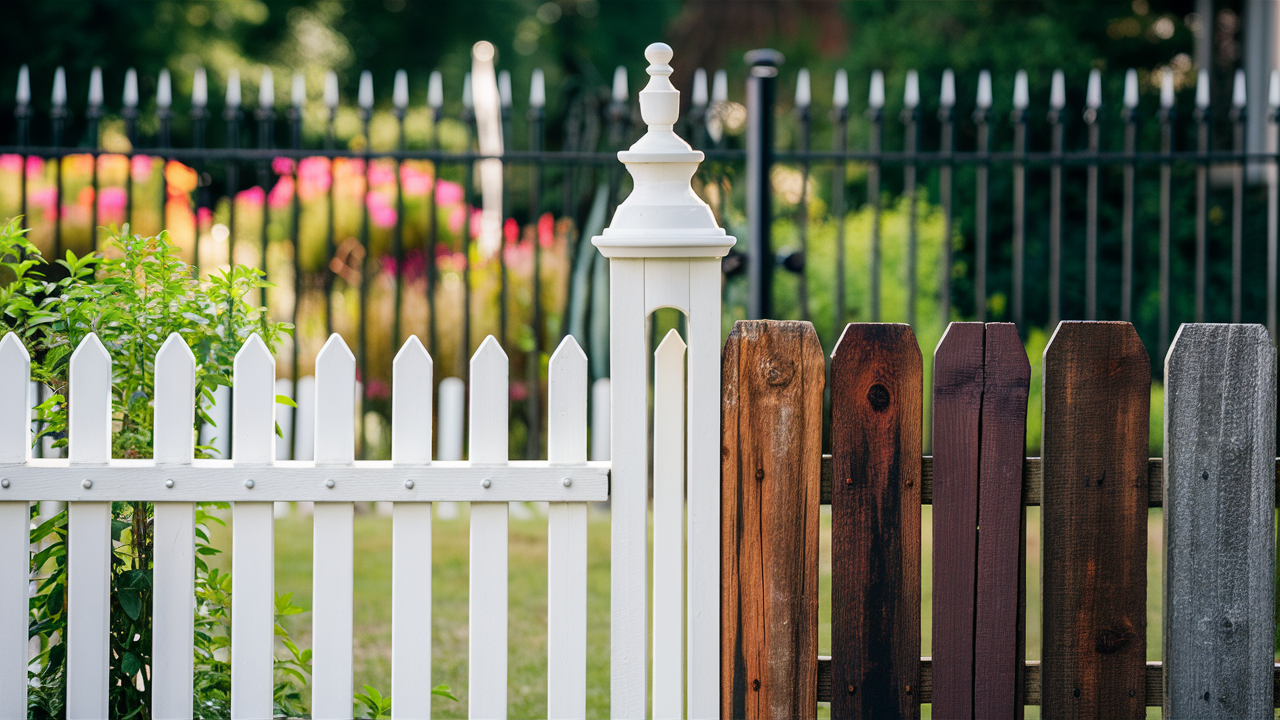
When selecting fencing materials for your property in New Zealand, you’ll find a range of options including wood, metal, vinyl, composite, and chain-link.
Wood offers customizable aesthetics, while metal provides strength and durability.
Each material has its unique advantages and suitability depending on your specific needs and local climate conditions.
Wood Fencing
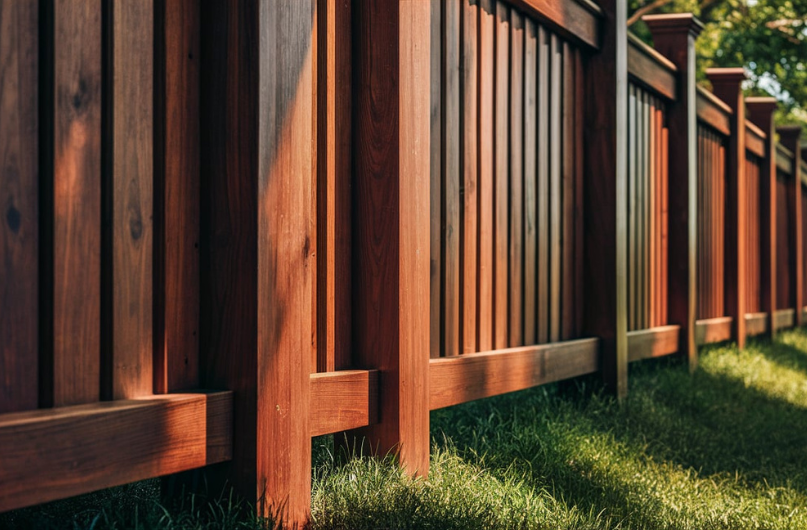
Wood fencing remains a pivotal choice in New Zealand, with pine and cedar being the most popular options due to their durability and aesthetic appeal. When considering wood durability, both pine and cedar offer robust performance, though cedar naturally resists decay and insect infestation better.
To boost longevity, you should invest in high-quality paint options that provide an additional layer of protection against the elements.
Rot prevention is vital in New Zealand’s varied climate. Treating your wood with appropriate preservatives can greatly reduce the risk of rot. If you prefer a more natural look, stain choices are plentiful and can offer varying degrees of weather resistance.
Opt for oil-based stains, which penetrate deeper into the wood, providing better protection and enriching the wood’s natural beauty.
Regular maintenance is necessary to uphold the fence’s integrity. Inspect your fence periodically for signs of wear and tear, and reapply paint or stain as needed. Weather resistance can be further improved by installing the fence with proper drainage and ensuring no direct soil contact, which can accelerate wood decay.
Metal Fencing
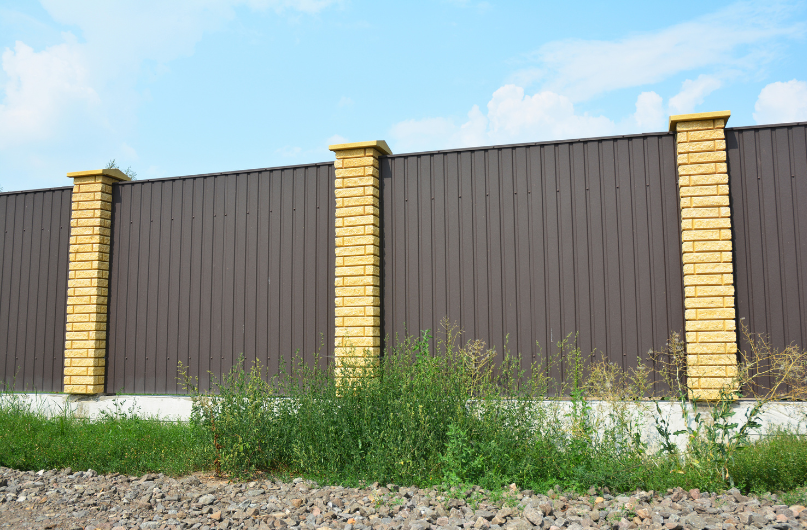
Switching from wood to metal fencing opens up a world of options with materials like aluminium, steel, and wrought iron, each offering unique benefits and drawbacks.
Aluminium is lightweight and resistant to corrosion, making rust prevention effortless. Steel, conversely, is robust and offers superior durability, but it requires a protective coating to prevent rust. Wrought iron is known for its classic aesthetic and strength, but it demands regular maintenance to tackle rust issues.
When it comes to durability comparison, steel tops the list, followed closely by wrought iron, with aluminium being the least durable but still highly sturdy. Custom designs are more feasible with wrought iron due to its malleability, allowing for intricate patterns and bespoke security features. Steel also offers excellent security features, particularly for high-risk properties, while aluminium is more suited for aesthetic and boundary purposes.
The installation process varies by material. Aluminium is typically easy to install due to its lightweight nature, whereas steel and wrought iron require more effort and specialized tools. Proper installation ensures longevity and effectiveness, so consider professional help to achieve the best results.
For those seeking mastery in property fencing, understanding these subtleties is important.
Vinyl Fencing
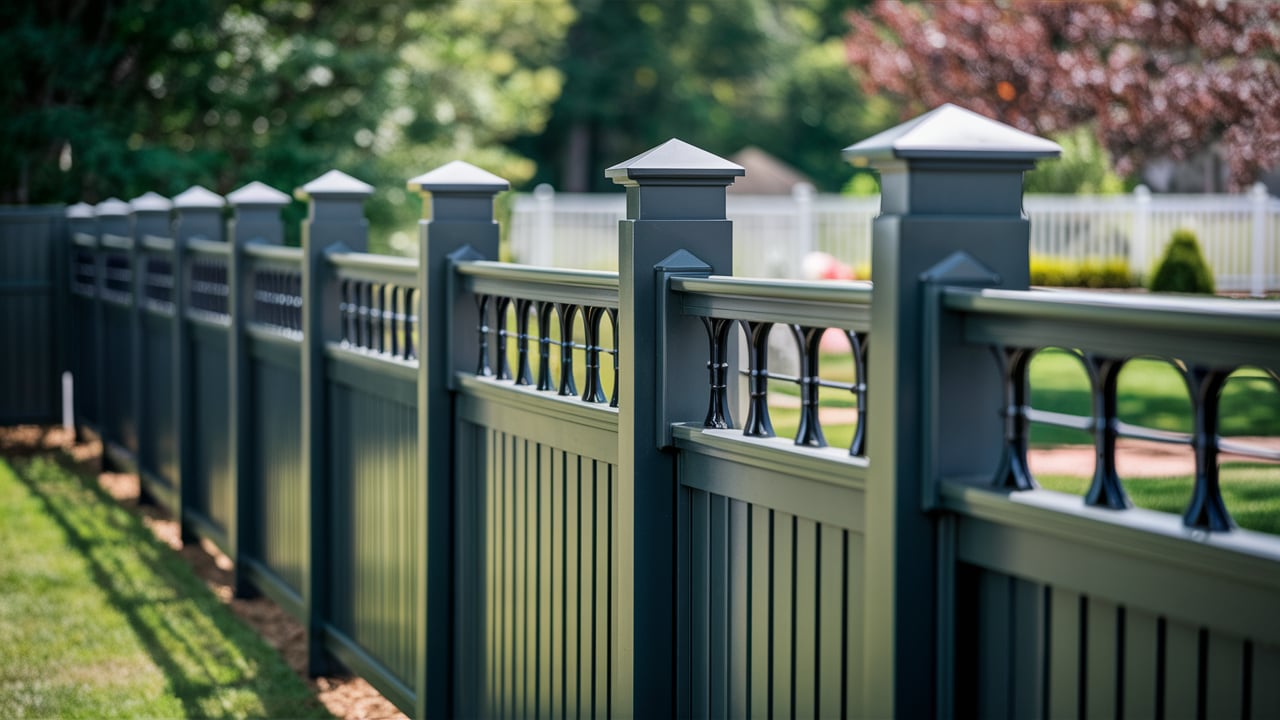
Vinyl fencing has surged in popularity across New Zealand due to its resilience, low maintenance requirements, and versatile design options. When considering vinyl fencing, you’ll appreciate its straightforward installation process, which typically involves interlocking panels and posts, reducing labor costs and time.
Custom designs are another significant advantage. Vinyl can be molded into various styles, heights, and textures, allowing you to tailor the fence to your property’s aesthetics and functional needs. From privacy panels to picket styles, the customization potential is extensive.
One often overlooked aspect is the environmental impact. Vinyl fencing is made from PVC, which can be recycled. While its production involves petrochemicals, the longevity of vinyl means fewer replacements and less waste over time.
Color options are plentiful, ranging from classic white to more contemporary hues like gray and tan. Unlike wood, vinyl doesn’t require painting or staining, and its color remains vibrant even with prolonged exposure to UV rays.
Composite Fencing
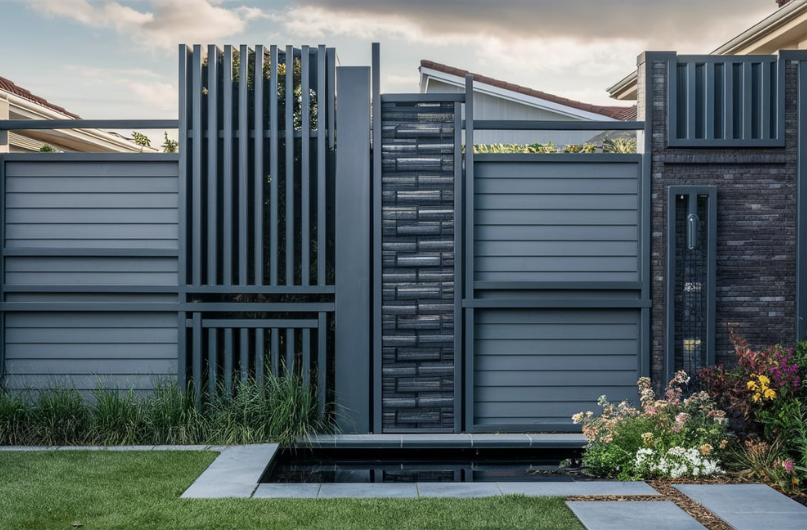
When assessing popular fencing materials in New Zealand, composite fencing stands out for its durability, low maintenance, and eco-friendly composition. Composite material combines recycled wood fibers and plastic, offering significant advantages over traditional wood in terms of longevity and resistance to weathering. In a durability comparison, composite fences outlast wood and vinyl, resisting rot, warping, and insect damage.
Eco-friendly options are increasingly important, and composite fencing aligns well with this trend by utilizing recycled materials, reducing the environmental footprint. This makes it a sustainable choice for environmentally conscious homeowners.
Regarding cost analysis, composite fencing may have a higher initial expense compared to wood or chain-link. However, the long-term savings on maintenance and replacement costs can make it a more economical option over time. You won’t need to paint, stain, or treat composite fencing, which reduces ongoing costs and effort.
The installation process of composite fencing is relatively straightforward and can be completed by professionals or skilled DIY enthusiasts. Its modular design allows for ease of assembly and customization.
Aesthetic appeal is another strong point; composite fences come in a variety of colors and styles, mimicking the natural look of wood while offering a modern, sleek appearance.
Chain-Link Fencing
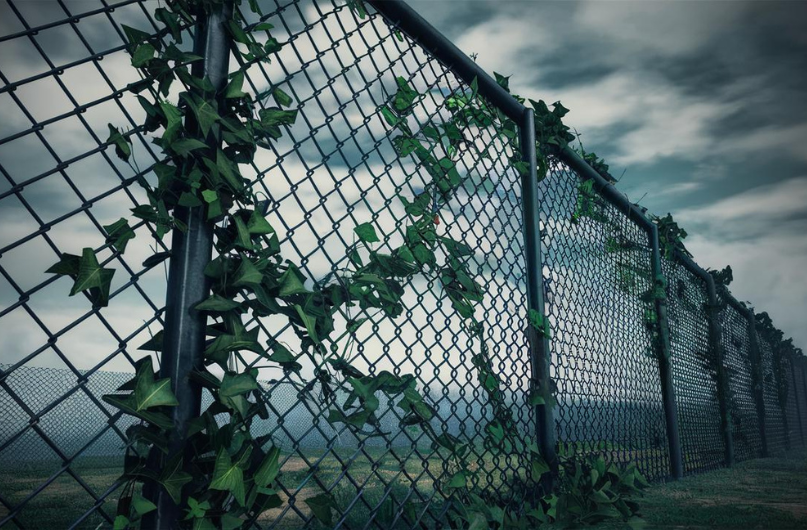
Chain-link fencing, a popular choice in New Zealand, offers a cost-effective and durable solution for property owners seeking security and boundary delineation. The installation process is relatively straightforward, involving setting posts, attaching the chain-link fabric, and securing it with tension bands and ties. This simplicity translates to reduced labor costs and quicker setup times, enhancing its cost-effectiveness.
Durability is a key advantage of chain-link fencing. Made from galvanized or vinyl-coated steel, this material resists rust and corrosion, ensuring longevity with minimal maintenance. It stands up well to New Zealand’s varied weather conditions, from heavy rain to strong winds, making it a reliable option for long-term use.
Aesthetically, chain-link fencing can be customized with vinyl coatings in different colors, enhancing its visual appeal. While it may not offer complete privacy, adding slats or privacy screens can improve both privacy and security. The open weave design allows for visibility, which can be advantageous for security purposes, as it enables clear sightlines.
Versatility is another strong point. Chain-link fencing is suitable for various applications, from residential properties to commercial spaces and sports facilities. Its weather resistance further solidifies its position as a practical, enduring choice for property owners.
Fencing Styles to Consider
When selecting a fencing style for your New Zealand property, you’ll want to explore various options like traditional picket fences, panel fencing, and vertical board fencing.
Each style offers distinct benefits, from the classic charm of picket fences to the robust privacy of vertical boards.
Evaluate your property’s needs and aesthetic goals to determine which style best aligns with your vision and functional requirements.
Traditional Picket Fences
Traditional picket fences, renowned for their classic design elements, provide an excellent choice for homeowners seeking to elevate their property’s curb appeal while maintaining a welcoming atmosphere. A white picket fence is iconic, instantly imparting garden charm to your home and offering a timeless aesthetic that complements various architectural styles. This type of fencing is particularly effective in New Zealand’s coastal regions, adding coastal appeal and resilience against salty air.
When selecting your picket fence, consider the range of painted options available. While the traditional white is quintessential, contemporary hues can also harmonize with your home’s exterior, providing both aesthetic and protective benefits. Modern finishes resist weathering, ensuring durability and minimal maintenance.
Balancing privacy with openness, picket fences typically feature evenly spaced vertical boards, allowing visibility without compromising security. This setup ensures your property feels open and inviting, yet demarcates boundaries effectively. For increased privacy, you can opt for taller pickets or reduced spacing.
In terms of practicality, picket fences are versatile and relatively easy to install. Their straightforward construction means they can adapt to various terrains, making them suitable for New Zealand’s diverse landscapes, from flat urban plots to rolling rural settings.
Panel Fencing
Exploring panel fencing options can greatly enhance your property’s privacy and noise reduction while offering a modern or traditional aesthetic to suit your taste. Panel fencing provides a range of choices, from sleek aluminium panels to classic wooden designs. Each option brings its own set of benefits, guaranteeing you can find the perfect match for your property.
The installation process for panel fencing is straightforward, but it requires meticulous planning. You’ll need to measure your boundary accurately and secure the posts firmly to ensure stability. Hiring professionals can expedite the process and secure a robust setup.
Maintenance tips for panel fencing vary based on materials. Wooden panels might require periodic staining or sealing to prevent rot and weather damage, while metal panels typically need less upkeep but should be checked for rust or corrosion regularly.
Design possibilities are virtually endless. You can opt for horizontal slats for a contemporary look or vertical panels for a timeless feel. The choice of colors, textures, and finishes adds another layer of customization, allowing you to create a fence that’s uniquely yours.
The privacy benefits of panel fencing are significant. Solid panels block out prying eyes and dampen noise, making your outdoor space a serene retreat.
Vertical Board Fencing
Vertical board fencing offers a robust and versatile option, combining durability with a classic aesthetic that complements various property styles. When considering installation tips, make sure your posts are set deep enough to withstand New Zealand’s variable weather. Proper alignment and spacing of the boards are essential for a seamless look and structural integrity.
Durability factors are paramount. Vertical board fences, particularly those made from treated timber or composite materials, resist rot and insect damage, ensuring they stand the test of time. To prolong lifespan, applying a quality sealant or paint is advisable.
In terms of cost comparison, vertical board fencing tends to be more affordable than high-end materials like wrought iron but slightly more expensive than basic chain-link options. However, the investment pays off through its longevity and low maintenance requirements.
Paint color options are abundant, allowing you to match or contrast your home’s exterior. Consider shades that improve your property’s aesthetics while providing an additional layer of protection against the elements.
The privacy benefits of vertical board fencing are significant. The close-set boards create a solid barrier, effectively shielding your property from prying eyes and reducing noise pollution, making it an ideal choice for urban and suburban settings.
Post and Rail Fencing
Post and rail fencing offers a rustic and rural appeal that’s ideal for New Zealand’s expansive landscapes and agricultural properties. This fencing style isn’t only aesthetically pleasing but also functional and durable, making it a popular choice for farmland and large properties.
When considering post and rail fencing, it’s crucial to understand the following aspects:
- Installation process: Typically straightforward, involving setting posts at regular intervals and attaching rails. This can often be done by a competent DIYer or a professional for larger projects.
- Cost comparison: Usually more cost-effective than more intricate fencing styles like vertical board or decorative fencing, making it a budget-friendly option for extensive properties.
- Durability factors: Constructed from treated timber, post and rail fencing can withstand New Zealand’s variable climate. Regular maintenance, like staining or sealing, can further extend its lifespan.
- Aesthetic appeal: The natural wood look blends seamlessly with rural settings, enhancing the scenic beauty of your property.
- Environmental impact: Using sustainably sourced timber minimizes environmental footprint, and the materials are typically biodegradable, reducing long-term ecological impact.
Decorative Fencing
For those looking to elevate their property’s visual appeal, decorative fencing offers a range of custom designs and materials that can transform any space into a stylish sanctuary. By choosing ornamental designs, you can add intricate patterns and textures that serve as both functional and aesthetic elements. These fences are perfect for defining garden borders, creating a harmonious blend between your landscape and the architectural style of your home.
Privacy screens are another excellent option within decorative fencing, providing seclusion while maintaining an elegant appearance. Materials like wrought iron, treated timber, or even modern composite panels offer versatility in design and durability.
When planning your property boundaries, consider the overall theme of your landscape. Decorative fencing can act as striking landscape accents, enhancing focal points such as fountains, flowerbeds, or pathways.
Don’t forget to factor in local regulations concerning fence height and materials to guarantee compliance. Additionally, think about how the terrain might impact the installation process. Utilizing custom designs allows for adjustments to suit uneven ground or specific visual preferences.
Factors to Consider When Choosing a Fence
When selecting a fence, it’s essential to factor in climate conditions, as New Zealand’s weather can affect materials differently.
Make sure you comply with local regulations and secure necessary permits to avoid legal issues.
Additionally, consider your budget and the maintenance requirements of various fencing materials to make a cost-effective and sustainable choice.
Climate Considerations
Take into account the weather resistance of different fencing materials to guarantee longevity and durability in New Zealand’s diverse climate. The country’s varying regions present unique challenges, from the humid, salt-laden air of coastal areas to the frost-prone inland zones. Understanding the material durability and how it withstands these conditions is key for a long-lasting fence.
In coastal conditions, salt air can accelerate corrosion and decay. Opt for materials known for high weather resistance and low long-term maintenance needs. For inland areas, consider how the material handles moisture and temperature fluctuations.
Here are some practical considerations:
- Metal Fences: Galvanized steel or aluminum resist corrosion well, making them ideal for coastal conditions.
- Wood Fences: Treated timber can endure various climates but requires regular maintenance to prevent rotting and warping.
- Vinyl Fences: Resistant to both moisture and UV damage, vinyl is an excellent low-maintenance option.
- Composite Fences: Combining wood and plastic, composites offer durability with reduced environmental impact.
- Living Fences: Hedging plants can provide natural barriers but need consistent care and are less effective in extreme coastal conditions.
Local Regulations and Permits
Understanding local regulations and permits is vital to guarantee your fence complies with New Zealand’s council requirements and avoids costly legal issues. The permit process can vary greatly across regions, so it’s important to familiarize yourself with local differences.
Begin by consulting your local council to understand the specific height restrictions and boundary rules that apply to your property. Typically, fences over 2 meters in height will require council approvals and adherence to building codes.
Legal requirements also dictate that your fence must respect property boundaries and avoid encroaching on neighboring land. Make sure you have accurate property boundary information before installation to prevent disputes. Zoning laws and neighborhood guidelines may impose additional restrictions based on the intended use of the fence, such as privacy, security, or aesthetic purposes.
To navigate these complexities, consider seeking expert advice or hiring a contractor well-versed in local regulations. They can guide you through the permit process efficiently and ensure compliance with all legal requirements.
Budget Constraints
While ensuring compliance with local regulations is fundamental, managing budget constraints is equally important when selecting the right fence for your property. A well-chosen fence not only serves its primary purpose but also offers cost-effectiveness without compromising on key factors.
To make an informed decision, consider the following aspects:
- Material durability: Choose materials that provide long-term resilience, reducing the need for frequent replacements.
- Installation costs: Factor in the cost of professional installation, which can vary considerably depending on the complexity and type of fence.
- Aesthetic appeal: Balance your budget with the visual harmony of the fence, ensuring it complements the overall look of your property.
- Longevity benefits: Investing in a durable fence might have higher initial costs, but it often translates to lower maintenance expenses over time.
- Resale value: A well-chosen fence can increase your property’s market value, making it an attractive feature for potential buyers.
Maintenance Requirements
Choosing a fence with low maintenance requirements can save you time and money in the long run. When evaluating your options, consider the regular maintenance each material demands. For example, wooden fences often require ongoing treatments to prevent rot and insect damage, which can drive up upkeep costs.
On the other hand, materials like vinyl or aluminum offer superior weather durability, reducing the need for frequent repairs.
Material longevity is another critical factor. While wooden fences may need replacement more frequently, typically every 10-15 years, metal and vinyl fences can last upwards of 20-30 years with minimal intervention. This difference in replacement frequency can significantly impact your overall investment in the fence.
Additionally, consider New Zealand’s unique climate conditions. Coastal areas with high salt content in the air might accelerate corrosion in metal fences, impacting their weather durability. Opting for galvanized or powder-coated options can mitigate this issue, extending the fence’s lifespan.
Frequently Asked Questions
What Are the Rules for Fences in New Zealand?
You’ve got to follow council regulations, including height restrictions, especially with pool fencing. For rural properties, check specific rules. Regular fence maintenance is crucial to comply with standards and keep your property safe and secure.
Can I Build a Fence on My Side of the Boundary in Nz?
Yes, you can construct a fence on your side of the boundary in New Zealand. Make sure to follow Council regulations, respect property boundaries, and meet legal obligations. Construction permits might be necessary. Address fence disputes proactively.
What Is the Best Fence in New Zealand?
To determine the best fence in New Zealand, evaluate climate resilience, cost analysis, privacy concerns, design trends, and sustainability factors. Consider aluminium for durability, timber for flexibility, and steel for strength and aesthetics. Check local regulations.
Do I Have to Put the Good Side of the Fence to My Neighbours?
You don’t have to put the good side of the fence facing your neighbors. However, practicing good fence etiquette improves neighbour relations, aesthetic appeal, and can prevent boundary disputes, especially if shared costs are involved.
Conclusion
To choose the right fence for your New Zealand property, assess your needs, adhere to local regulations, and consider your budget.
Evaluate materials like wood, metal, vinyl, and composite for their durability and maintenance requirements.
Factor in climate conditions and how the fence might impact property resale value.
By balancing aesthetics with practicality, you’ll select a fence that improves both your property and the stunning New Zealand landscape.
